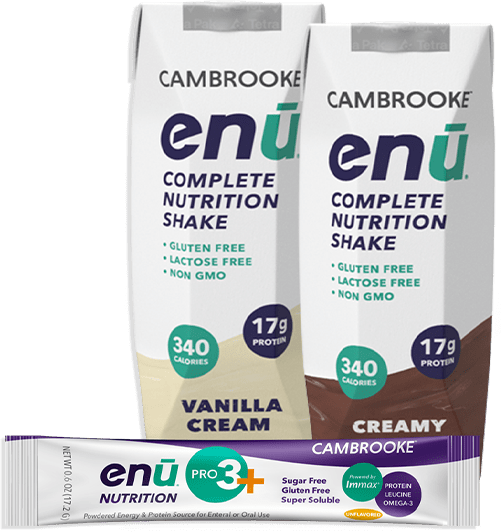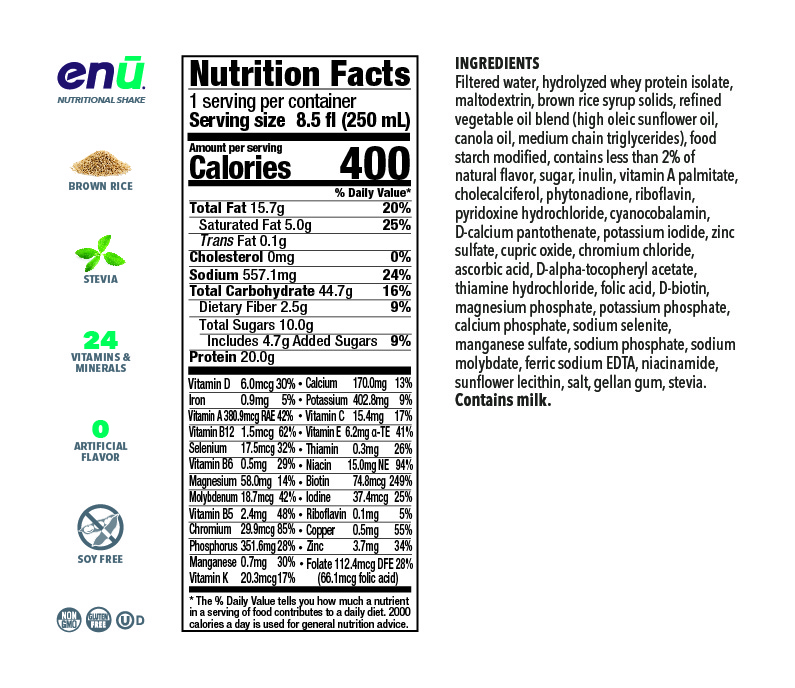
Get a FREE
ENU Intro Pack*
*Just Pay $2.00 Shipping

How Is Sarcopenia Treated?
As an inevitable part of the human condition, old age can sometimes seem to impose one limitation after another on a person’s lifestyle, whether due to an illness, injury, or some other factor. It’s for this reason that older adults can feel like they have no say in the changes their bodies are undergoing, but the truth is that – in a few cases, at least – the effects of aging can absolutely be addressed, often through one or two simple changes in a person’s day-to-day life. A perfect example of this is sarcopenia, the age-related loss of muscle mass, which can have a significant, negative impact on a senior’s quality of life. So, how is sarcopenia treated? To find out, keep reading as the team at ENU, makers of protein shakes for seniors, provide some answers.
An Overview of How to Treat Sarcopenia by Understanding the Causes
Before trying to understand the treatments for sarcopenia and what makes them effective, it’s often helpful to first examine how the condition works and what causes sarcopenia. As mentioned above, sarcopenia is an age-related condition that leads to a loss of muscle mass and strength over time. However, these effects often begin much earlier than you might think; many adults will start to see a decline in muscle mass in their thirties, which generally continues at a steady pace (a loss of about half a pound of muscle per year) for several decades. Once a person hits age 60 or so, this process kicks into high gear, and by the time a person is in their 70s, they can lose muscle mass at a rate of more than 1% per year.
The reason for these losses can vary widely from person to person. Some are related to lifestyle choices – a lack of exercise, for example, can cause the body to give up muscle mass – while others are caused by unavoidable biological shifts – such as a change in the levels of certain hormones as a person ages. However, even though some of the causes of sarcopenia can’t be treated, others actually can be addressed quite effectively. In the next section, we’ll look at how sarcopenia is treated and what you can do about the condition in the comfort of your own home.
What is the Treatment for Sarcopenia?
Although many people assume that a loss of strength is simply another unavoidable part of aging, this condition can be treated in ways that are both very accessible and relatively simple to execute. For the most part, treating sarcopenia requires just two things: a diet rich in protein and a strength-based exercise routine; let’s examine these methods in greater detail below.
A Diet High in Protein
Just like anyone, those with sarcopenia have certain levels of nutrients they’re supposed to consume, which are known as a Recommended Dietary Allowance, or RDA. This number can vary from person to person based on a few factors, including age, height, weight, and fitness level, but the standard RDA for adults is pretty clear: at least 0.8 grams per kilogram of body weight daily, which translates to eating just over a third of a gram per pound each day. (As an example, if you weigh 180 pounds, you should aim to consume at least 60 grams of protein every day, at minimum.) For older adults, this number is even higher, with experts recommending as much as half a gram of protein per pound of body weight, or about 50% more than what’s suggested for a younger or middle-aged adult.
However, many seniors fail to meet these dietary requirements, which can further contribute to the march of sarcopenia. Because the body needs protein to build new muscle cells and preserve those that already exist, a lack of this critical macronutrient can make it even more difficult for a person to keep up their strength; in addition, the other requirement for treating sarcopenia, strength training, relies on having adequate protein to build up muscle mass, so without this part of your treatment, you can find yourself continuing to decline, even if you exercise. Of course, getting plenty of protein can be easier said than done, especially if you lack an appetite or struggle with one or more digestive problems common to older adults, so ask your doctor whether supplementing your diet with an easy-to-consume meal replacement shake or protein-rich nutritional powder would be a good idea.
Exercising to Treat Sarcopenia
There are many forms of exercise out there, but the version that has proven most beneficial for treating the effects of sarcopenia is progressive resistance training, or PRT. This type of weightlifting workout relies on customizing the resistance of each exercise to the current strength level of the person involved, then gradually increasing that resistance over the course of weeks and months, a method that has shown to be effective at stimulating the production of new muscle tissue and increasing a person’s strength. Before you hit the gym or buy some weights, however, you should talk to your doctor and ask whether it’s safe to start an exercise routine. They may also have some useful suggestions regarding what kinds of exercises are most effective, and if not, you can always work with a personal trainer to establish the routine that’s right for you.
Healthy, Nutritious Protein Shakes to Help Treat Sarcopenia Available from ENU
Simply adding a protein-rich nutrition shake or powder to your diet may not be enough on its own to treat or slow down sarcopenia, but the importance of getting enough protein combined with the convenience and nutritional value of ENU products means they’re a great choice for many looking to fight this insidious ailment. To learn more about the benefits of ENU products, visit us online or give us a call at (855) 266-6733 today.














